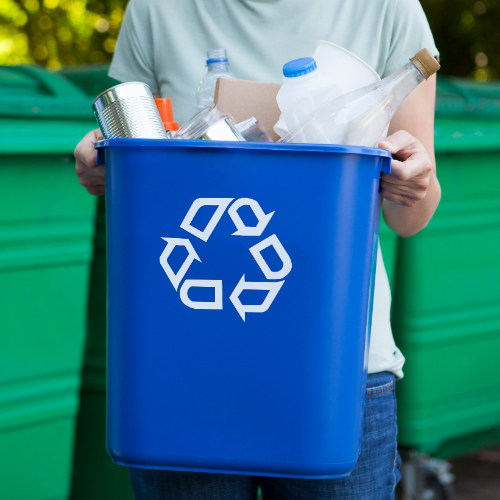CONSCIOUS LIVING
While there are many ways to live more sustainably, reducing your carbon footprint and save money along the way is a good place to start. The best environmental tip is to remain conscious in your habits at all times and aim to think about your habits large and small. Challenge your existing behavior.
Changing entrenched habits can be hard but persevering will form significant improvements in environmental impacts. Small daily changes add up to significant emission reductions over a year.
Read More
Spend some time each day asking questions like:
What could I have done more sustainably today?
What disposable items in my home can I replace with reusable ones?
Where could I walk more frequently than I drive?
How can I learn more about living a less wasteful life?
What can I do tomorrow to reduce my energy or water consumption?
Get creative, keep learning, and consider these tips on living a more environmental lifestyle and reducing your carbon footprint.
1. Buying secondhand
There are some things that need to be purchased new. Outside of those things, consider the purchase secondhand items, books, clothing, sports equipment, technology, furniture, etc.
Not only are secondhand products cheaper, but they offer huge environment benefits from every product you avoid buying brand new. Browse selling apps, consignment shops, Op shops and garage sales.
Your carbon footprint will be drastically reduced due to reduced shipping requirements, and the cost to produce new items which require energy and resources to manufacture.
2. Participate in Environmental Events
The next time there is a beach cleanup, recycling day, or other environmentally focused event near you, participate! Not only will you feel great by doing something active for the planet and your community, but you will inspire others to join you.
The best way to achieve lasting change is in numbers. The more people doing their part to reduce their carbon footprint and consumption, the better for the planet. Bring your family, friends and coworkers along with you!
3. Reduce, Reuse, Recycle
Living a conscious lifestyle is a great way begin reducing your consumption of plastics and nonreusable items. While recycling is the best way forward to ensure your waste is repurposed you can also reduce your waste and overall carbon footprint is by avoiding the consumption in the first place.
Some great swaps to make are choosing glass, bamboo, biodegradable materials and aluminum over plastic. Glass can be reused and recycled indefinitely, where plastics can only be recycled a handful of times before they are unsuitable for manufacturing.
Try reusing jars, containers, and other items as many times as you can before recycling or purchasing a new product. Reusing provides a longer life to your products and your money used to purchase them. Reusing containers avoids the waste entering the recycling stream.
Check what items may be recycled in your area. Before tossing it in the recycling bin, ensure that your items are generally clean. Sort your recycling into the correct bin. Food contaminated packaging is very difficult to recycle, and contaminated packaging or nonrecyclable goods placed in a recycling bin can contaminate an entire load of recyclables. Unfortunately, contaminated waste in most circumstances will be discarded to landfill. For large items some councils operate local recycling drop off depots and they can accept a range of bulky items that are sorted and streamed for recycling. Check with your council to see if they have a depot and what they can accept.
Read Less




Conscious Living




While there are many ways to live more sustainably, reducing your carbon footprint and save money along the way is a good place to start. The best environmental tip is to remain conscious in your habits at all times and aim to think about your habits large and small. Challenge your existing behavior.
Changing entrenched habits can be hard but persevering will form significant improvements in environmental impacts. Small daily changes add up to significant emission reductions over a year.
Read More
Spend some time each day asking questions like:
What could I have done more sustainably today?
What disposable items in my home can I replace with reusable ones?
Where could I walk more frequently than I drive?
How can I learn more about living a less wasteful life?
What can I do tomorrow to reduce my energy or water consumption?
Get creative, keep learning, and consider these tips on living a more environmental lifestyle and reducing your carbon footprint.
1. Buying secondhand
There are some things that need to be purchased new. Outside of those things, consider the purchase secondhand items, books, clothing, sports equipment, technology, furniture, etc.
Not only are secondhand products cheaper, but they offer huge environment benefits from every product you avoid buying brand new. Browse selling apps, consignment shops, Op shops and garage sales.
Your carbon footprint will be drastically reduced due to reduced shipping requirements, and the cost to produce new items which require energy and resources to manufacture.
2. Participate in Environmental Events
The next time there is a beach cleanup, recycling day, or other environmentally focused event near you, participate! Not only will you feel great by doing something active for the planet and your community, but you will inspire others to join you.
The best way to achieve lasting change is in numbers. The more people doing their part to reduce their carbon footprint and consumption, the better for the planet. Bring your family, friends and coworkers along with you!
3. Reduce, Reuse, Recycle
Living a conscious lifestyle is a great way begin reducing your consumption of plastics and nonreusable items. While recycling is the best way forward to ensure your waste is repurposed you can also reduce your waste and overall carbon footprint is by avoiding the consumption in the first place.
Some great swaps to make are choosing glass, bamboo, biodegradable materials and aluminum over plastic. Glass can be reused and recycled indefinitely, where plastics can only be recycled a handful of times before they are unsuitable for manufacturing.
Try reusing jars, containers, and other items as many times as you can before recycling or purchasing a new product. Reusing provides a longer life to your products and your money used to purchase them. Reusing containers avoids the waste entering the recycling stream.
Check what items may be recycled in your area. Before tossing it in the recycling bin, ensure that your items are generally clean. Sort your recycling into the correct bin. Food contaminated packaging is very difficult to recycle, and contaminated packaging or nonrecyclable goods placed in a recycling bin can contaminate an entire load of recyclables. Unfortunately, contaminated waste in most circumstances will be discarded to landfill. For large items some councils operate local recycling drop off depots and they can accept a range of bulky items that are sorted and streamed for recycling. Check with your council to see if they have a depot and what they can accept.
Read Less
Conscious Living
While there are many ways to live more sustainably, reducing your carbon footprint and save money along the way is a good place to start. The best environmental tip is to remain conscious in your habits at all times and aim to think about your habits large and small. Challenge your existing behavior.
Changing entrenched habits can be hard but persevering will form significant improvements in environmental impacts. Small daily changes add up to significant emission reductions over a year.
Read More
Spend some time each day asking questions like:
What could I have done more sustainably today?
What disposable items in my home can I replace with reusable ones?
Where could I walk more frequently than I drive?
How can I learn more about living a less wasteful life?
What can I do tomorrow to reduce my energy or water consumption?
Get creative, keep learning, and consider these tips on living a more environmental lifestyle and reducing your carbon footprint.
1. Buying secondhand
There are some things that need to be purchased new. Outside of those things, consider the purchase secondhand items, books, clothing, sports equipment, technology, furniture, etc.
Not only are secondhand products cheaper, but they offer huge environment benefits from every product you avoid buying brand new. Browse selling apps, consignment shops, Op shops and garage sales.
Your carbon footprint will be drastically reduced due to reduced shipping requirements, and the cost to produce new items which require energy and resources to manufacture.
2. Participate in Environmental Events
The next time there is a beach cleanup, recycling day, or other environmentally focused event near you, participate! Not only will you feel great by doing something active for the planet and your community, but you will inspire others to join you.
The best way to achieve lasting change is in numbers. The more people doing their part to reduce their carbon footprint and consumption, the better for the planet. Bring your family, friends and coworkers along with you!
3. Reduce, Reuse, Recycle
Living a conscious lifestyle is a great way begin reducing your consumption of plastics and nonreusable items. While recycling is the best way forward to ensure your waste is repurposed you can also reduce your waste and overall carbon footprint is by avoiding the consumption in the first place.
Some great swaps to make are choosing glass, bamboo, biodegradable materials and aluminum over plastic. Glass can be reused and recycled indefinitely, where plastics can only be recycled a handful of times before they are unsuitable for manufacturing.
Try reusing jars, containers, and other items as many times as you can before recycling or purchasing a new product. Reusing provides a longer life to your products and your money used to purchase them. Reusing containers avoids the waste entering the recycling stream.
Check what items may be recycled in your area. Before tossing it in the recycling bin, ensure that your items are generally clean. Sort your recycling into the correct bin. Food contaminated packaging is very difficult to recycle, and contaminated packaging or nonrecyclable goods placed in a recycling bin can contaminate an entire load of recyclables. Unfortunately, contaminated waste in most circumstances will be discarded to landfill. For large items some councils operate local recycling drop off depots and they can accept a range of bulky items that are sorted and streamed for recycling. Check with your council to see if they have a depot and what they can accept.
Read Less





Carbon Offset Advisory acknowledges the traditional owners and custodians of country throughout Australia and acknowledges their continuing connection to land, water and community.
We pay our respects to the people, the cultures and the elders past, present and emerging.

